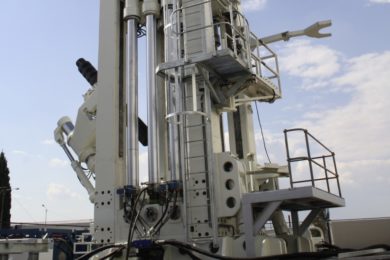Health and safety is one of the key articles in the October issue of International Mining. Sonic Drilling reports that new safety regulations and many job contracts [today] require drillers to utilise safety systems that are designed to eliminate any physical lifting over 18 kg as well as prevent physical contact with rotating rods.
The company says that “compared to many other types of drilling, sonic drill rigs are safer due to their unique patented technology which uses smooth rods and casings that significantly increase operator safety and, with no auger flights, there is far less opportunity for clothing or items to be caught on rig components.
“Sonic drills also incorporate a tiltable head, an optional hands-free automated rod loading system and hydraulic breakout wrenches that all reduce manual labor and increase worker safety. In addition, safety cages are available on all Sonic Drill Corp track and truck models. Safety cages envelop the drill head rotating spindle and hydraulic breakout table clamps. The cage is lightweight and attaches to the drill mast (the overall transport height is not increased when the unit is attached).”
The safety cage has a hinged access door on the front and opening the access door immediately stops the spindle rotation. Drillers can also activate a spring-centred override switch at the console which enables 5 rpm of rotation at low torque. Closing the door reactivates full rotation and torque. All switches and circuits are designed to be tamper-proof so that operators cannot bypass the safety system.
Sonic drilling technology provides a number of additional advantages that often reduce time on site and decrease worker exposure to work hazards and jammed equipment. Through its great speed (three to five times faster) as well as its ability to core easily through mixed soils without jamming up or requiring a rig switch out, the sonic drilling method is both faster and cleaner. In addition, only a sonic drill can recover a continuous core including boulders, clays, silt, sand and gravel and lay it in its stratigraphic sequence – from the surface all the way down to 100 m and beyond.









